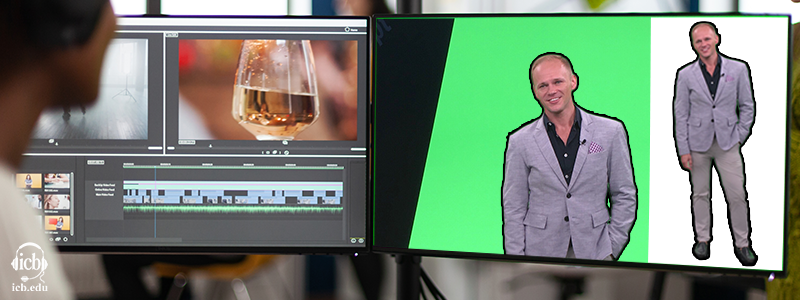
Beginner Video Editing Tips for Using Green Screens
If you’re working on becoming a filmmaker, videographer, or multi-media guru, at some point, you’ll likely want to try your hand at using a green screen. A green screen is a backdrop that filmmakers use to shoot footage which will later be superimposed over a separately filmed background. Whenever you see your favorite superhero jumping off buildings or flying around, that scene was probably shot using a green screen. Here are some tips for effectively using a green screen in your production.
Set Up Your Screen
Hang a green screen on a frame and make sure it’s big enough to fill the entire background of your shot. Make sure it’s as flat and smooth as possible, with no wrinkles, tears, or shadows. You can rent or purchase a wrinkle-resistant matte green screen, or simply DIY with a green sheet and an iron.
Light it Right
In addition to properly lighting your shot, you also need to light the green screen itself, ideally with diffused light from above. You’ll need at least two 1,000-watt bulbs that are diffused for best results.
Position Your Subject
Make sure that there’s a good bit of space between your subject and the green screen – otherwise the green may reflect on to your person or object, making it more challenging when you try to add in a new background later.
Take Several Takes
While you have the green screen set up and properly lighted, be sure to take multiple takes so you have the raw footage you need later in production.
Edit the Rough Cut
Before you go to the trouble of taking out the green and adding in a new background, edit all your footage into a rough (or even better, final) cut. That way, you aren’t spending time editing footage that may end up on the cutting room floor.
Remove the Green
Using your handy-dandy video editing software, you should be able to easily remove the green background. Depending on which software you use, it may be as easy as clicking a button. You’ll then be able to further adjust and customize the footage.
Add in Your Background
Now, you can simply paste your background footage on another layer beneath the footage of your subject. Be sure to tweak the lighting, sharpness, and other factors to make your final result look as seamless and realistic as possible.
Check Out ICB
If you love learning about video and film production, the International College of Broadcasting can help you turn your passion into a career with innovative programs in Video Production and Audio Recording, Broadcasting, and Multimedia Production & Broadcasting. To learn more, contact us or give us a call at 855-896-3733.

